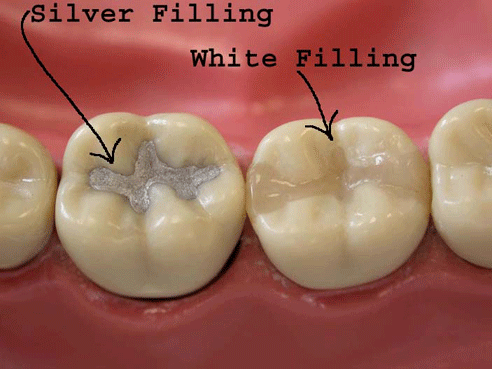
I) How long should a crown last?
It would be reasonable to expect that a dental crown could last between five and fifteen years. Most likely a crown that has only lasted five years would be somewhat of a disappointment to your dentist. It's probably their hope that any crown they make for you will last ten years or longer. Depending upon the general wear and tear the crown is exposed to (chewing and biting forces, accidental trauma, tooth grinding) and how well you keep its tooth free of dental plaque, a crown can last somewhat indefinitely.II) Why do dental crowns need to be replaced?
There can be a variety of reasons why a dental crown might need to be slated for replacement. They include: Damage/Breakage, Excessive wear, Complications with tooth decay, Failed cosmetic appearance.A) The dental crown has become worn excessively.
Dental crowns are not necessarily more wear resistant than your own natural teeth, nor is it in your best interest that one should be. The ideal dental crown would be one made out of a material that has the same wear characteristics as tooth enamel. This way neither the crown nor your own natural teeth will wear the other excessively. Especially in those cases where a person has a habit of clenching and grinding their teeth, a dentist will sometimes detect a small hole on the chewing surface of a crown where it makes contact with an opposing tooth (a tooth that touches the crown when you bite down). Since the seal of the crown has been compromised, a new crown should be made before that point in time when dental plaque has had a chance to seep under and start a cavity. In some cases, it may be observed that a crown in causing excessive wear of the person's opposing natural teeth. If so, one solution might be to make a replacement crown from a different type of material (gold, dental ceramic) that is less abrasive to tooth enamel.B) Tooth decay has formed at the edge of the crown.
While a dental crown can't be damaged by decay, the tooth on which it's cemented certainly can be. This means that if dental plaque is allowed to accumulate on a tooth in the region beyond the edges of the crown, a cavity can start. The worst-case scenario for a dental crown in this situation is that in order to be able to access the cavity, the dentist will need to take off the existing crown (an act that may or may not damage it). After the decay has been removed, in most cases ideal treatment involves making a new replacement crown.C) The dental crown has broken or been damaged.
Dental crowns can break, or more precisely the porcelain component of one may fracture. With the exception of those that have worn excessively, it's rare to see an all-metal (gold) crown break. Any type of dental crown may need to be replaced because it was damaged when a dental procedure was performed. A common example lies with root canal treatment. We discuss this topic here: After root canal treatment, can the original crown still be used?Broken porcelain crowns.
D) The cosmetic appearance of the crown has become objectionable.
Some dental crowns are replaced because their appearance is no longer pleasing. Two situations where the cosmetic nature of a dental crown can change with time are:1) The dental crown's edge has become visible and it has a grey appearance.
2) The color of the dental crown no longer matches its neighboring teeth.
source: http://www.animated-teeth.com/dental_crowns/t9_dental_crowns_alternatives.htm
http://www.smilesbydesigninlivermore.com










